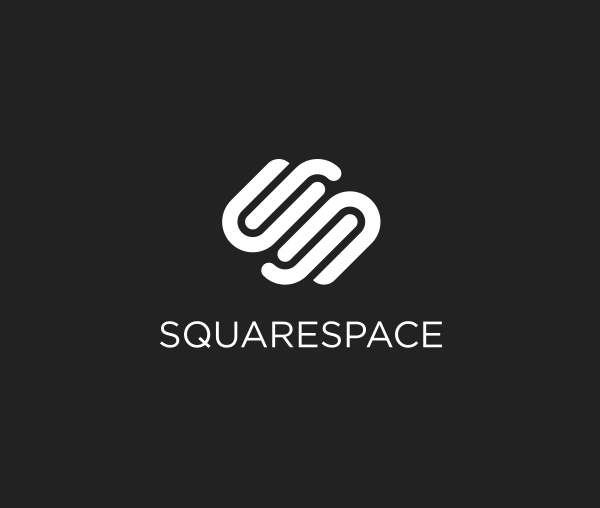Sony Alpha a7 III Mirrorless Digital Camera with 28-70mm Lens
My Sony a7III Photos from Sony Launch Event
[gallery ids="17740,17741,17742,17743,17744,17745,17746,17747,17748"]
Sample Images from Sony
[gallery ids="17715,17716,17717,17718,17719,17720,17721,17722,17723,17724,17725"]
Specs
Sony a7 III
Sony a7 II
Lens Mount
Sony E-Mount
Sony E-Mount
Camera Format
Full-Frame
Full-Frame
Pixels
24 MP: 6000 x 4000 (new BSI Sensor)
24 MP: 6000 x 4000
File Formats
Still Images: JPEG, RAWMovies: AVCHD Ver. 2.0, MPEG-4 AVC/H.264, XAVC SAudio: AC3, Dolby Digital 2ch, Linear PCM (Stereo)
Still Images: JPEG, RAWMovies: AVCHD Ver. 2.0, MPEG-4, XAVC SAudio: AAC LC, Dolby Digital 2ch, Linear PCM (Stereo)
Bit Depth
14-Bit
14-Bit
Memory Card Type
SDSDHCSDXCMemory Stick Pro DuoMemory Stick PRO HG-Duo
SDXCSDHCSDMemory Stick PRO Duo (High Speed)Memory Stick PRO HG-DuoMemory Stick XC-HG Duo
Image Stabilization
Sensor-Shift, 5-Way
Sensor-Shift, 5-Way
Video Format
3840 x 2160p at 23.98, 25, 29.97 fps (100 Mb/s XAVC S via H.264)3840 x 2160p at 23.98, 25, 29.97 fps (60 Mb/s XAVC S via H.264)1920 x 1080p at 100, 120 fps (100 Mb/s XAVC S via H.264)1920 x 1080p at 100, 120 fps (60 Mb/s XAVC S via H.264)1920 x 1080p at 23.98, 25, 29.97, 50, 59.94 fps (50 Mb/s XAVC S via H.264)1920 x 1080p at 50, 59.94 fps (25 Mb/s XAVC S via H.264)1920 x 1080p at 25, 29.97 fps (16 Mb/s XAVC S via H.264)1920 x 1080i at 50, 59.94 fps (24 Mb/s AVCHD via H.264)1920 x 1080i at 50, 59.94 fps (17 Mb/s AVCHD via H.264)
1920 x 1080p at 24, 30, 60 fps (50 Mb/s XAVC S)1920 x 1080p at 60 fps (28 Mb/s AVCHD)1920 x 1080i at 60 fps (24 Mb/s AVCHD)1920 x 1080i at 60 fps (17 Mb/s AVCHD)1920 x 1080p at 24 fps (24 Mb/s AVCHD)1920 x 1080p at 24 fps (17 Mb/s AVCHD)1440 x 1080 at 30 fps (12 Mb/s MP4)640 x 480 at 30 fps (3 Mb/s MP4)
Video Clip Length
Up to 29 Minutes
Up to 29 Minutes
Autofocus
Phase Detection: 693Contrast Detection: 425Automatic (A), Continuous-Servo AF (C), Direct Manual Focus (DMF), Manual Focus (M), Single-servo AF (S)
Phase Detection: 117Contrast Detection: 25Continuous-Servo AF (C), Direct Manual Focus (DMF), Manual Focus (M), Single-servo AF (S)
Viewfinder Type
Electronic, 100% Coverage
Electronic, 100% Coverage
Buffer/Continuous Shooting
Up to 10 fps at 24.2 MP for up to 89 Frames in Raw FormatUp to 10 fps at 24.2 MP for up to 177 Frames in JPEG FormatUp to 8 fps at 24.2 MP
Up to 5 fps at 24 MP for up to 50 Frames
Built-in Flash
No
No
Connectivity
HDMI D (Micro), USB 2.0 Micro-B, USB 3.0, USB Type-C, Wi-Fi
1/8″ Headphone, 1/8″ Microphone, HDMI D (Micro), Micro-USB, Multi Interface Terminal, Wi-Fi
Dimensions (W x H x D)
5.0 x 3.9 x 3.0" / 127.0 x 99.1 x 76.2 mm
5.0 x 3.8 x 2.4″ / 126.9 x 95.7 x 59.7 mm
Weight
1.4375 lb / 652 g
1.223 lb / 556 g

































 You trade off some features for the smaller size of the Spark. While the Mavic is capable of 24 minutes flight time, closer to 30 with the new Platinum. The Spark offers just 16 minutes in ideal conditions and in flying both of these - I am almost always done with getting the shots I need with the Mavic and have plenty of battery left. With the Spark, it feels fairly urgent to get the shots I need in that shorter timeframe. The Mavic is faster and while you can switch the Spark into sports mode I have struggled to get very cinematic looking shots when it that mode, the Mavic in normal mode is fast enough and remains smoothly controllable. You also sacrifice range - the Mavic can be flown nearly 4 miles away, the Spark just over a mile when using the controllers for each- honestly here in the United States, you need to keep them both in sight at all times so the difference doesn’t bother me much. And it’s important to mention that the spark at $500 does not come with a controller - you control with the DJI app on your phone - that range is much more limited, just 100 meters and while the Mavic is capable of this too it’s really not something I recommend. The lack of tactile feedback and trying to keep your eyes on the drone plus the screen that your fingers are partially obscuring just make it awkward.
You trade off some features for the smaller size of the Spark. While the Mavic is capable of 24 minutes flight time, closer to 30 with the new Platinum. The Spark offers just 16 minutes in ideal conditions and in flying both of these - I am almost always done with getting the shots I need with the Mavic and have plenty of battery left. With the Spark, it feels fairly urgent to get the shots I need in that shorter timeframe. The Mavic is faster and while you can switch the Spark into sports mode I have struggled to get very cinematic looking shots when it that mode, the Mavic in normal mode is fast enough and remains smoothly controllable. You also sacrifice range - the Mavic can be flown nearly 4 miles away, the Spark just over a mile when using the controllers for each- honestly here in the United States, you need to keep them both in sight at all times so the difference doesn’t bother me much. And it’s important to mention that the spark at $500 does not come with a controller - you control with the DJI app on your phone - that range is much more limited, just 100 meters and while the Mavic is capable of this too it’s really not something I recommend. The lack of tactile feedback and trying to keep your eyes on the drone plus the screen that your fingers are partially obscuring just make it awkward. Difference in the external controllers too with the Mavic providing an LCD screen with some basic info (though everything important is also displayed through the app so you don’t really miss out on info but I find it nice to have my altitude and distance in a dedicated spot), you also have a 5 way configurable stick that is replaced by a simple button on the Spark controller and a few additional customizable buttons on the Mavic controller.
Difference in the external controllers too with the Mavic providing an LCD screen with some basic info (though everything important is also displayed through the app so you don’t really miss out on info but I find it nice to have my altitude and distance in a dedicated spot), you also have a 5 way configurable stick that is replaced by a simple button on the Spark controller and a few additional customizable buttons on the Mavic controller. But of course the Spark can be flown without any controller at all via gesture mode and not something available on the Mavic - it feels a bit gimmicky and at times I struggled to get it to do much other than take off and land on my palm but when it works it is fun to use and certainly impresses your friends.
But of course the Spark can be flown without any controller at all via gesture mode and not something available on the Mavic - it feels a bit gimmicky and at times I struggled to get it to do much other than take off and land on my palm but when it works it is fun to use and certainly impresses your friends. Both cameras share the same sensor though the mavic is capable of shooting RAW stills that gives you more editing capabilities, offers a slightly wider fixed aperture f/2.2 vs f/2.6 in the spark and, shooting 4k video with 3 axis gimbal support vs just 1080 and 2 axis gimbal in the Spark at a lower bit rate. I my testing I certainly see an advantage with the Mavic in stills and video quality, especially in lower light. The spark isn’t bad - it just feels a touch behind what the Mavic provides in quality. I haven’t really noticed a difference between the 2 axis and 3 axis gimbals - the spark video looks just as stable smooth.
Both cameras share the same sensor though the mavic is capable of shooting RAW stills that gives you more editing capabilities, offers a slightly wider fixed aperture f/2.2 vs f/2.6 in the spark and, shooting 4k video with 3 axis gimbal support vs just 1080 and 2 axis gimbal in the Spark at a lower bit rate. I my testing I certainly see an advantage with the Mavic in stills and video quality, especially in lower light. The spark isn’t bad - it just feels a touch behind what the Mavic provides in quality. I haven’t really noticed a difference between the 2 axis and 3 axis gimbals - the spark video looks just as stable smooth. You do see a noticeable difference in control options for both photos and video in the app - Not only does the Mavic provide the RAW shooting you have color profiles for video and you can customize the speed of the gimbal for very controlled, cinematic looking shots - not possible on the Spark.
You do see a noticeable difference in control options for both photos and video in the app - Not only does the Mavic provide the RAW shooting you have color profiles for video and you can customize the speed of the gimbal for very controlled, cinematic looking shots - not possible on the Spark. The Spark is cheaper, lighter, smaller and in some ways more fun to fly but does not provide 4k and its image quality/video quality is decent but not quite as good as the Mavic.The Mavic costs more but offers image and video quality that I love using in my travel videos along with the extended flight time and faster speed while remaining cinematic and still being portable enough to bring along just about everywhere.I think the Spark makes a great first drone but the Mavic has those additional advantages that make it worthwhile for the serious content creators that need to travel.I recommend the Fly More Combo for both drones - the extra batteries are useful and having the multi-charger for both drones makes a big difference in how quickly you can get flying again. I recommend buying from B&H Photo - no sales tax outside of NY state.
The Spark is cheaper, lighter, smaller and in some ways more fun to fly but does not provide 4k and its image quality/video quality is decent but not quite as good as the Mavic.The Mavic costs more but offers image and video quality that I love using in my travel videos along with the extended flight time and faster speed while remaining cinematic and still being portable enough to bring along just about everywhere.I think the Spark makes a great first drone but the Mavic has those additional advantages that make it worthwhile for the serious content creators that need to travel.I recommend the Fly More Combo for both drones - the extra batteries are useful and having the multi-charger for both drones makes a big difference in how quickly you can get flying again. I recommend buying from B&H Photo - no sales tax outside of NY state.



 Shop all the DJI Spark colors at B&H Photo
Shop all the DJI Spark colors at B&H Photo


